01dragonslayer
Ripped
- Jacked Cash
- 482,262
Protein is necessary for many things. Whether you want to lose weight, gain muscle, recover from a tough workout, feel more satiated at mealtime or simply maintain good health, it’s important to get adequate amounts of healthy protein.
Protein is a crucial component of every cell in our bodies. It’s used to build and repair tissues (like skeletal muscle, bone, hair, fingernails, cartilage, skin and blood), as well as make enzymes and hormones that help regulate metabolism, growth and many other things. Like carbohydrates and fat, protein also provides energy, but because it has so many other important functions and can’t be stored, the body relies first on carbohydrates and fat for energy.
Protein gets digested into amino acids that are absorbed by the small intestine and distributed throughout the body. Cells take what they need and rearrange amino acids to make new proteins or repair older ones. Because the body doesn’t store protein, any excess amino acids are either converted into glucose and subsequently glycogen to use as energy if the body is short on carbohydrates, or converted into fatty acids and stored as fat. Getting enough protein is important so the body can perform these functions on a daily basis. But just like carbs and fat, excess protein gets converted into fat and stored as fat.
Protein is found in a variety of foods: most notably meat, poultry, fish, dairy, eggs, legumes, nuts, seeds, soy and even grains. From a dietary perspective, meats, poultry, fish, eggs and soybeans are complete proteins — that is, they provide all of the amino acids required by our body. Other protein sources like legumes, some nuts and seeds, grains and leafy greens, don’t provide adequate amounts of the essential amino acids by themselves but can when eaten in combination with other foods and as part of a balanced diet.
Our body changes every day as cells grow, divide and die — these processes depend on protein to supply vital building blocks to our cells. Because of this, you need to eat enough protein to maintain lean muscle mass and support other important body functions.
The recommended dietary allowance (RDA) predicts how much protein you should eat on a daily basis to guard against lean muscle loss. The RDA for protein is 0.8 gram/kilogram of body weight, but this is a minimum for the average sedentary adult, aka the “weekend warrior.” MyFitnessPal calculates protein intake to be 20% of your daily calories, which is likely more than enough to maintain muscle mass.
Here’s how to calculate the minimum amount of protein you should be eating:
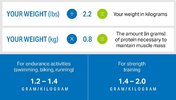
If you exercise regularly — particularly if you log 1 hour or more of moderate to vigorous exercise several days per week.
Most people can easily use real food, rather than protein powders and other supplements, to meet their protein needs. A sedentary woman weighing 127 pounds only needs a daily dose of about 46 grams of protein, which she can meet by eating 3 ounces of chicken breast, one large egg, a handful of almonds and a stick of string cheese.
Here’s a quick list of protein-rich foods, or check out our Definitive Guide to High-Protein Foods:
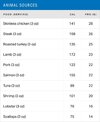
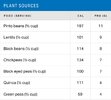
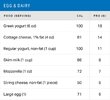
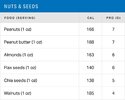
No matter how you meet your protein goals, these seven tips help you get the most out of protein:
1. SPREAD OUT PROTEIN BETWEEN MEALS
Protein-rich foods don’t come cheap, but you can maximize your body’s ability to digest, absorb and use protein by distributing it evenly throughout meals and snacks. Just take the total grams of protein you need daily and divide it into the total number of meals and snacks you eat daily.
2. EAT PROTEIN IMMEDIATELY AFTER EXERCISE
Having a high-protein snack soon after exercise (ideally before the one-hour mark) is best because this is when muscles are sensitive to nutrients they can use to repair and grow.
3. PAIR PROTEIN WITH CARBS
This is especially important when you’re refueling after aerobic exercise (like running) since protein is needed for muscle repair and carbs are needed to restock energy stores. Remember: Macros (carbs, fat and protein) like to work together.
4. SEEK OUT MORE PLANT PROTEIN
Vegetarian or not, we can all benefit from eating more plant-based protein. In addition to being great sources of protein, foods like beans, peas, quinoa and lentils are rich in other nutrients like fiber, vitamins and minerals.
5. CHOOSE LEAN CUTS OF MEAT
Meat eaters, look for lean cuts like pork and beef tenderloin. A general rule of thumb when shopping: Cuts that have round, chuck or loin in the name are usually lean.
Some cuts may take a bit longer to prepare (try marinating or braising), but if prepared right, they’re equally as delicious as fattier cuts. Since ground meats are typically high in fat, look for the leaner options, like 90/10 ground beef, which contains 90% lean meat and only 10% fat. If you’re a steak or burger-lover, limit red meat to once or twice per week since it’s high in saturated fat.
6. MAKE SMART POULTRY CHOICES
Skin aside, poultry is generally lean — but beware when buying ground chicken or turkey. Unless it says 100% ground turkey breast or chicken breast on the package, the meat has likely been ground up with the skin and fat, which means that turkey burger may not be any healthier than one made from ground beef.
7. INCREASE YOUR FISH INTAKE
If you enjoy fish, aim to eat 3–4 ounces of it twice a week. Frozen or fresh, fish can be a great source of protein. Some — like salmon — are rich in omega-3’s, a healthy, unsaturated fat.
PROTEIN BASICS
Protein is a crucial component of every cell in our bodies. It’s used to build and repair tissues (like skeletal muscle, bone, hair, fingernails, cartilage, skin and blood), as well as make enzymes and hormones that help regulate metabolism, growth and many other things. Like carbohydrates and fat, protein also provides energy, but because it has so many other important functions and can’t be stored, the body relies first on carbohydrates and fat for energy.
But just like carbs and fat, excess protein gets converted and stored as fat.
Protein gets digested into amino acids that are absorbed by the small intestine and distributed throughout the body. Cells take what they need and rearrange amino acids to make new proteins or repair older ones. Because the body doesn’t store protein, any excess amino acids are either converted into glucose and subsequently glycogen to use as energy if the body is short on carbohydrates, or converted into fatty acids and stored as fat. Getting enough protein is important so the body can perform these functions on a daily basis. But just like carbs and fat, excess protein gets converted into fat and stored as fat.
Protein is found in a variety of foods: most notably meat, poultry, fish, dairy, eggs, legumes, nuts, seeds, soy and even grains. From a dietary perspective, meats, poultry, fish, eggs and soybeans are complete proteins — that is, they provide all of the amino acids required by our body. Other protein sources like legumes, some nuts and seeds, grains and leafy greens, don’t provide adequate amounts of the essential amino acids by themselves but can when eaten in combination with other foods and as part of a balanced diet.
TARGET PROTEIN NEEDS
Our body changes every day as cells grow, divide and die — these processes depend on protein to supply vital building blocks to our cells. Because of this, you need to eat enough protein to maintain lean muscle mass and support other important body functions.
The recommended dietary allowance (RDA) predicts how much protein you should eat on a daily basis to guard against lean muscle loss. The RDA for protein is 0.8 gram/kilogram of body weight, but this is a minimum for the average sedentary adult, aka the “weekend warrior.” MyFitnessPal calculates protein intake to be 20% of your daily calories, which is likely more than enough to maintain muscle mass.
Here’s how to calculate the minimum amount of protein you should be eating:

If you exercise regularly — particularly if you log 1 hour or more of moderate to vigorous exercise several days per week.
GOOD SOURCES OF PROTEIN
Most people can easily use real food, rather than protein powders and other supplements, to meet their protein needs. A sedentary woman weighing 127 pounds only needs a daily dose of about 46 grams of protein, which she can meet by eating 3 ounces of chicken breast, one large egg, a handful of almonds and a stick of string cheese.
Here’s a quick list of protein-rich foods, or check out our Definitive Guide to High-Protein Foods:




PROTEIN BEST PRACTICES
No matter how you meet your protein goals, these seven tips help you get the most out of protein:
1. SPREAD OUT PROTEIN BETWEEN MEALS
Protein-rich foods don’t come cheap, but you can maximize your body’s ability to digest, absorb and use protein by distributing it evenly throughout meals and snacks. Just take the total grams of protein you need daily and divide it into the total number of meals and snacks you eat daily.
2. EAT PROTEIN IMMEDIATELY AFTER EXERCISE
Having a high-protein snack soon after exercise (ideally before the one-hour mark) is best because this is when muscles are sensitive to nutrients they can use to repair and grow.
3. PAIR PROTEIN WITH CARBS
This is especially important when you’re refueling after aerobic exercise (like running) since protein is needed for muscle repair and carbs are needed to restock energy stores. Remember: Macros (carbs, fat and protein) like to work together.
4. SEEK OUT MORE PLANT PROTEIN
Vegetarian or not, we can all benefit from eating more plant-based protein. In addition to being great sources of protein, foods like beans, peas, quinoa and lentils are rich in other nutrients like fiber, vitamins and minerals.
5. CHOOSE LEAN CUTS OF MEAT
Meat eaters, look for lean cuts like pork and beef tenderloin. A general rule of thumb when shopping: Cuts that have round, chuck or loin in the name are usually lean.
Some cuts may take a bit longer to prepare (try marinating or braising), but if prepared right, they’re equally as delicious as fattier cuts. Since ground meats are typically high in fat, look for the leaner options, like 90/10 ground beef, which contains 90% lean meat and only 10% fat. If you’re a steak or burger-lover, limit red meat to once or twice per week since it’s high in saturated fat.
6. MAKE SMART POULTRY CHOICES
Skin aside, poultry is generally lean — but beware when buying ground chicken or turkey. Unless it says 100% ground turkey breast or chicken breast on the package, the meat has likely been ground up with the skin and fat, which means that turkey burger may not be any healthier than one made from ground beef.
7. INCREASE YOUR FISH INTAKE
If you enjoy fish, aim to eat 3–4 ounces of it twice a week. Frozen or fresh, fish can be a great source of protein. Some — like salmon — are rich in omega-3’s, a healthy, unsaturated fat.

